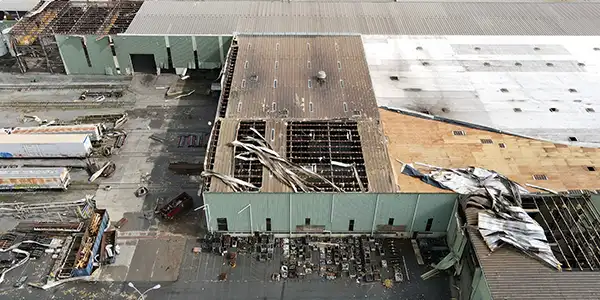Weathering the Storm: Making the Most of Insurance Coverage

Summer is here and so are the storms, monsoons and hurricanes. This year, we are preparing for an active hurricane season, as predicted by the Colorado State University (CSU) hurricane forecast team. They anticipate an extremely active season, with the Atlantic basin's Accumulated Cyclone Energy (ACE) and Net Tropical Cyclone (NTC) activity forecasted to be approximately 170% of their long-term averages from 1991 to 2020. We may be facing up to 23 named storms and 5 major hurricanes. NOAA's forecasters predict an above-normal hurricane season as well. It's crucial to start preparing your commercial building for a bumpy ride ahead. One of the important aspects is optimizing your insurance coverage.
Step 1: Take a deep look at your existing policy and whether you need to adjust it.
There are multiple types of insurance policies on the market and it's important to ensure the policy you have meets your specific needs. For example, some policies may not cover windstorms or hail damage and many commercial insurance policies do not cover flood damage. It's essential to review your policy to confirm it provides the necessary coverage. Pay attention to the fine print! Consider adding any additional coverage that your facility may require.
Step 2: Commercial roof inspections before storms.
Being proactive before a storm hits can make a big difference in what happens afterward. Regular roof inspections and preventative maintenance are paramount in identifying any existing weak points on your facility’s roof that could escalate into more significant damage during an extreme weather event. A comprehensive commercial roof inspection provides you with a detailed report documenting your current roof condition as well as repair recommendations. Completing those repairs and keeping your roof in top shape will not only help you prepare for the storm season but also serve as documentation for your insurance company to help streamline the claims process later. It's essential that you get quality and detailed reports for your records. Check out this article to help you!
Step 3: Post-storm inspection.
You weathered the storm! What’s next? A post-storm roof inspection is in order so you can identify and address any damage. Keep in mind, not all storm damage is visible to the naked eye. Commercial roof systems are built to last and withstand extreme weather. With proper maintenance and timely repairs, you can postpone replacements for a long time. However, it doesn't mean they are immune to extreme storm damage. You simply may not see it yet. Factors such as wind uplift, punctures from flying debris, compromised membrane seams and clogged drainage systems may generate minor issues that will grow with each and every storm until there's an active leak or a roof blow off. Therefore, address those issues early while you can still get your insurance to pay for it. Having both before and after roof inspection reports in hand will help you show the precise storm damage to your insurance company.
Step 4: Navigating the claims process.
As you already know, thorough documentation is essential to make this process less daunting. With your pre-storm and post-storm roof inspection reports in hand, which include photos, videos and any interim repairs completed, you are off to a good start. Avoid common mistakes such as delaying reporting damages or overlooking policy exclusions.
As storm and hurricane season approaches, it's important to be prepared for the unexpected. Damage to your facility’s roof can take various forms and may be easily overlooked until it becomes a larger issue. Stay proactive in assessing and maintaining your roof to ensure it can withstand whatever Mother Nature throws at it!
Experiencing a roofing emergency after extreme weather? Check out our 24/7/365 emergency commercial roof repair services. With over 650 crews from coast to coast, we are here to get your roof back to watertight!
When you subscribe to the blog, we will send you an e-mail when there are new updates on the site so you wouldn't miss them.
